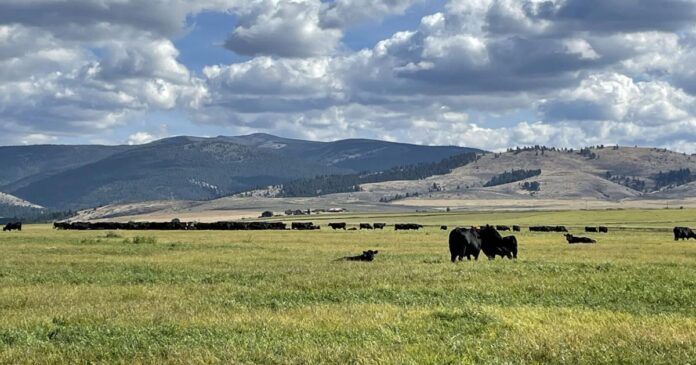In 1999, current Ravalli County Commission Chair, Dan Huls, and other members of the farming and ranching community were approached by local leaders to help support the future of the agricultural industry in Ravalli County.
“They asked us to put together a meeting and we ended up forming a committee which later became the advisory board called the Ravalli County Right to Farm & Ranch Board,” said Huls.
Coming from a long line of dairy farmers, Huls didn’t have to be convinced that there needed to be some sort of action taken to help support an industry that was already diminishing.
“My passion for this work started in large part because of my own personal experience dairy farming in the Valley, and the changes I’d seen happening to our agricultural land, families, and economy,” said Huls, whose family owned the business from 1950 to 2020. “We knew at that time that if we didn’t do something proactive, ag in our valley would be in big trouble.”
People are also reading…
Oftentimes, agricultural families count on the equity in their land as their retirement nest egg or as their 401K. The Right to Farm and Ranch Board realized that the community needed to find another way for landowners to extract some of the value from their land and have it remain available for agricultural production.
After researching what other ag communities were doing to help balance rapid growth across the state, the committee learned about the successful open lands bond program in fast-growing Gallatin County which created financial incentives for local landowners to protect critical open landscapes for the benefit of agricultural, wildlife, water resources, and the public.
That program planted the seed for what would eventually become the Open Lands Bond Program in Ravalli County.
In 2006, Ravalli County Commissioners agreed to place the issue before the voters and that November, Ravalli County voters approved a $10 million bond to be used to purchase development rights from willing private landowners in order to preserve open land, maintain agriculture, and protect wildlife and water resources.
Now, 16 years and over 10,000 conserved acres later, County Commissioners have asked Ravalli County voters to consider renewing the Open Lands Program.
Designed as a voluntary, landowner-driven investment in the Bitterroot Valley’s future, the Open Lands Program has helped the community conserve family farms and ranches, wildlife habitat, nearly 40 miles of Bitterroot River and tributary streams, hunting, fishing and recreational access, and community parks and trails since its inception.
“If private agricultural land in ‘middle America’ is lost, for whatever reason, it will never be regained,” says Joann White Hosko, Board Member of Yes to Ravalli County Open Lands, as well as serving on the Ravalli County Right to Farm and Ranch Board. Her ancestors first homesteaded in 1891 on what would become the John Harold White Family ranch in the foothills northwest of Victor. “The fact that selling off land is so easy in today’s market, emphasizes the urgency of incentivizing landowners to retain their open lands. This is where the Open Lands Program and funds have such a positive impact.”
While many of the conservation projects completed to date support local Bitterroot farming and ranching families, the Open Lands Bond Program preserves more than ag land. Funding from the program has helped create community parks, like Skalkaho Bend Park along the river in Hamilton, fishing and recreation access sites like C. Ben White Memorial Fishing Access Site and Trail in Conner, and secured public hunting opportunities on the 1,080-acre Lazy J Cross Ranch near Sula that provides hunting access through Montana’s Block Management Program.
“I think a lot of people think that the Open Lands Bond Program is just about open space and agriculture,” said Eddie Olwell, a fly fishing outfitter who has operated his business Fishs Eddy O for the past 23 years. “But the Open Lands Program has also protected nearly 40 miles of river and stream habitat in the Bitterroot watershed that is the lifeblood of our valley. It benefits access for anglers. For example, the C. Ben White Fishing Access on the West Fork preserved 100 acres of riparian land, and also connects thousands of acres of national forest land. Without the Open Lands Bond Program, that access would likely have been lost.”
“This is about maintaining the work that the program has accomplished since 2006,” said Loyd Rennaker, Darby rancher. “With so many local landowners waiting on this funding to start their conservation projects, if we don’t come together as a community and pass this bond, this valley might look a whole lot different tomorrow than the valley we all love today.”
Credit: Source link






























